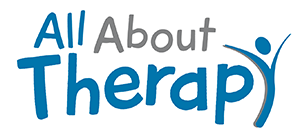Feeding Milestones Through the First Year and When to Seek Help
Is your little one on track or having difficulties with feeding and eating? Here are some milestones to look for through the first year of life, and some red flags for when to seek additional help from an occupational therapist.
Birth to six months: from the time your baby is born until six months of age your baby’s diet consists of breast milk, formula, or a combination of both. During this time babies are fed on demand when they are hungry. A sucking reflex and tongue thrust reflex are present to help babies suck on a breast or bottle to obtain milk.
Six to eight months: Around this time is when your baby can start trying their first foods. Firsts foods can include stage 1 baby foods (smooth pureed) along with infant cereal. Stage 1 foods include single ingredient smooth pureed fruits and vegetables. Infant cereals are usually rice or oatmeal based. Around this time the tongue thrust reflex starts to disappear which allows babies to begin to learn to use a spoon. If your child doesn’t like a spoon at first, that’s okay! It may take some practice. You may also have to wait until your baby loses their tongue thrust reflex, which is usually around six to eight months but may persist longer in children with developmental delays. Another key developmental milestone to look for when starting your baby on foods is the ability to sit up. Before starting your baby on baby foods make sure they are able to sit up on their own or with just a little bit of support. High chairs should be chosen to help support your baby in an upright position while eating.
Eight to ten months: This is the time your baby can start trying a greater variety of foods and mixed flavored foods. Stage 2 (thick pureed) and stage 3 (pureed with chunks) foods can be introduced along with dissolvable solid foods. Stage 2 foods include foods like pudding, whole milk yogurt, purred potatoes/sweet potatoes or pureed meats. Stage 3 foods are pureed with small chunks. These foods include mashed up banana, mashed up avocado, cottage cheese, mashed up carrots and other mashed up vegetables and meats. This is also the time when flavors can be combined, such as apple strawberry banana puree, chicken vegetable puree and chicken rice puree. Dissolvable solids include cheerios, baby puffs and yogurt melts. At this age your baby should be starting to use their hands to feed themselves and developing a pincer grasp (using their index finger and thumb to pick up small finger foods). Some children have difficulty transitioning from smooth pureed foods to pureed foods with chunks due to sensory processing differences. If your child hasn’t made the transition to purred food with chunks by around ten to twelve months, consult with an occupational therapist.
Ten to twelve months: At this age babies can increase their intake of table foods. Things your baby can try are foods like macaroni and cheese, peas, soft beans, corn, zucchini and meats that are cooked well and in small chunks. Your baby should also have improved efficiency in finger feeding and should be beginning to use a utensil with some help. If your child will not tolerate touching food or having food on their hands in order to self-feed this could be an indicator of a sensory processing difference.
Red flags to look for:
- -Difficulty progressing through feeding stages.
- -Regression in feeding stage.
- -Will only tolerate eating limited textures or flavors.
- -Meal time takes longer than 30 minutes.
Remember to be patient. Not all children meet each milestone at exactly the recommended month, and a few weeks later is usually nothing to be concerned about. If you suspect your child may have feeding and eating difficulties due to delayed fine motor skills, delayed oral motor skills (chewing) or sensory processing differences speak with an occupational therapist about what can be done to help your child get on track.


